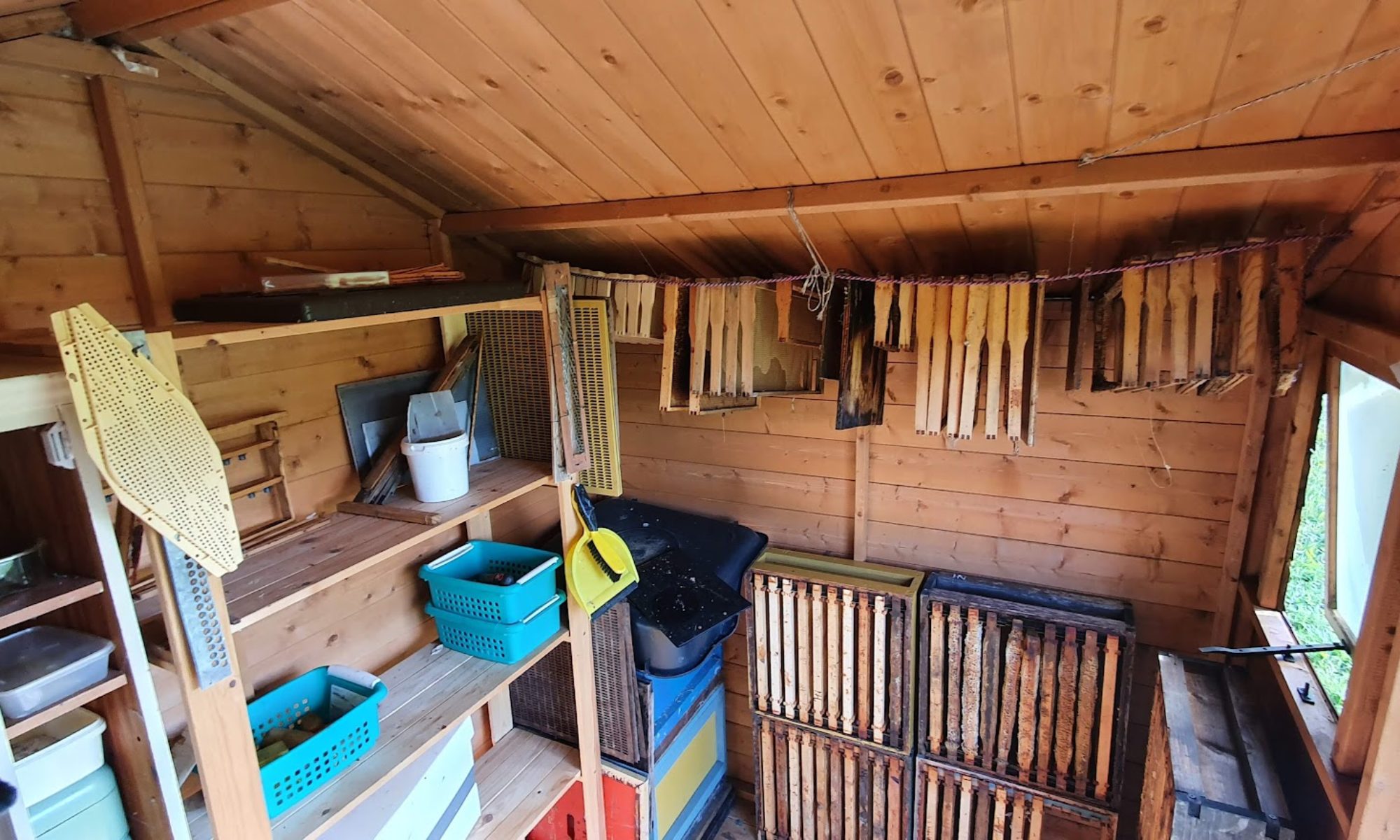I am very fortunate to have a lovely location for my apiaries, this is Matching Tye. The hives from here sit in a private garden which comprises of 13 acres of wildflower meadow, vegetable garden, orchard and flower garden; set in a area surrounded by farmers fields with oilseed rape, beans and other varieties of local flora.




The bees here have a lovely choice of year round forage sources in short, which makes for a reliable harvest (if I can just keep them from swarming).
Here in our pictures we an see the meadow they have as an overview. This is a south facing aspect although with trees to the left out of picture they don’t get the sun until 10am – which can make them grumpy to inspect early as the hives have not warmed up. It can be a hot pocket in the afternoons though as they have high trees behind which works to baffle the wind from taking the heat off. Essex is a warm and dry county in the Uk, which makes for a fairly reliable crop.
Anyway back to the theme… harvesting. Harvesting from this location is usually early May (in a good westher year), early June, July and maybe a August. The early May usually has oilseed rape (canola) in it and is a bit prone to set. As such it can be a timed harvesting to align with the rape fields turning green, and a speedy extraction – before it goes hard in the frames resulting in not processing it all or hours of scraping honey out of frames. The issues with leaving it to the bees is it will mean any honey they put in with it will also end up setting in the frames.
Beyond that stage, its spinning out the honey and draining into a bucket. I separate the honey by locations and on occasion by hive – as the bees are faithful to sources they find it can mean a really interesting / different honey in one hive while other neighbours are more consistent. I also separate by month/harvest – as month by month the bees find different flowers I bloom and the honey varies as a result. I have to say my favourite is when having a dry hot spring the flowers run low on nectar and the bees go for the chestnut – this gives a lovely rich brown honey with a lovely aroma and taste with caramel overtones.
